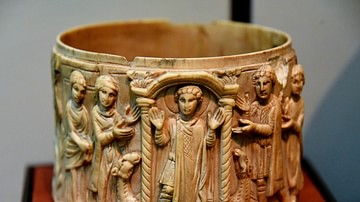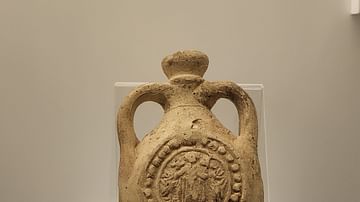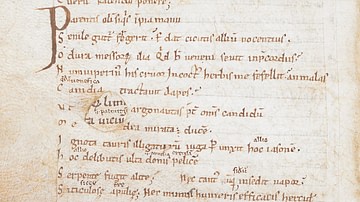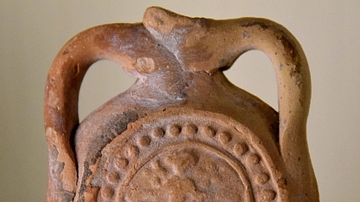Search
Remove Ads
Advertisement
Summary 
Loading AI-generated summary based on World History Encyclopedia articles ...
Search Results

Image
Ivory Pyxis Depicting Saint Menas
This ivory pyxis (round box) shows the saint Menas with camels. His shrine near Alexandria in Egypt was a popular pilgrim site in the Byzantine Empire. Menas, an Egyptian soldier, was executed by Emperor Diocletian (reigned 284-305 CE) for...

Image
Pilgrim Flask of St Menas
From the Monastery of St Menas, Abu Mina, Egypt.
6th-7th century CE. Made from clay. (Hellenic Museum, Melbourne, Victoria).

Article
Horace's Epodes
Horace's Epodes is a book of 17 poems, published around 30-29 BCE. It contains many of the earliest poems of Quintus Horatius Flaccus, better known as Horace (65-8 BCE); some were written before his acquaintance with Maecenas, patron of the...

Image
Christian Pilgrim Bottle
This is a pinkish pottery bottle, through which Christian pilgrims took water from the healing spring of St. Menas near Alexandria. From Alexandria, Egypt. Byzantine period, 4th to 7th centuries CE. Unpublished. The Petrie Museum of Egyptian...

Video
Abu Mena (UNESCO/NHK)
The church, baptistry, basilicas, public buildings, streets, monasteries, houses and workshops in this early Christian holy city in Egypt were built over the tomb of the martyr Menas of Alexandria, who died in A.D. 296. Source: UNESCO...

Article
Pilgrimage in the Byzantine Empire
Pilgrimage in the Byzantine Empire involved the Christian faithful travelling often huge distances to visit such holy sites as Jerusalem or to see in person relics of holy figures and miraculous icons on show from Thessaloniki to Antioch...